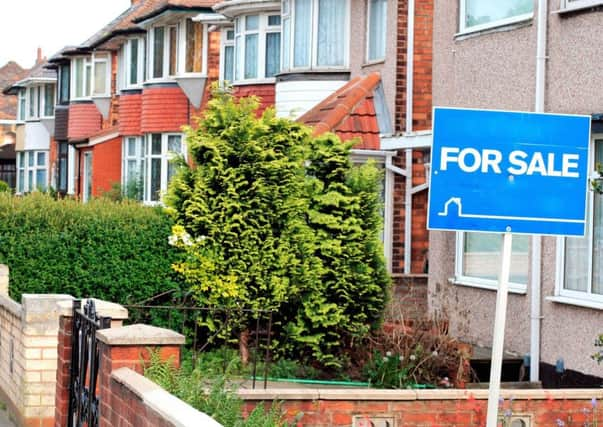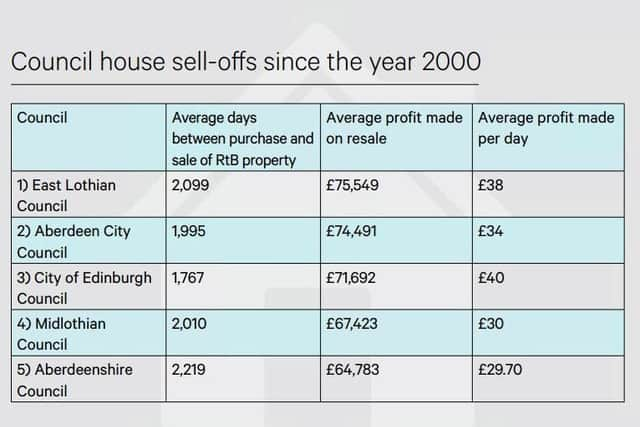Revealed: Scots profit from council house sell-offs


Many of the properties, which were originally built by local authorities to offer good quality housing to working families have since passed into the hands of buy-to-let landlords.
Giving council tenants the chance to purchase their homes at heavily discounted rates was a cornerstone of Margaret Thatcher’s privatisation programme, which saw state assets sold-off throughout the 1980s.
Advertisement
Hide AdAdvertisement
Hide AdWhile popular with those who directly benefited, the policy has since been blamed as a contributing factor to the housing crisis gripping parts of the UK.


Around 500,000 homes were sold under RtB in Scotland since the policy was introduced in 1980. It was scrapped by SNP ministers in 2016, with the devolved Welsh Government following suit this year.
The average profit earned from the purchase of a former council property in Scotland and its eventual resale was £25 per day, analysis by the BBC Shared Data Unit showed.
Three vendors were found to have bought under RtB north of the Border and then resold their houses on the same day – one for a £60,700 profit.
A total of 53,175 Scots remained in the same home they had bought under RtB as of April 2018, while 10,860 people were found to have transferred their property for reasons other than purely money.
Housing minister Kevin Stewart said that by ending the scheme, around 15,500 homes available for social rent had been protected over a ten- year period.
He added: “This will benefit current and future tenants, the wider community, and support our efforts to increase the supply of affordable homes for Scotland, which is the sustainable, long-term solution to addressing housing affordability. Nearly 82,100 homes have been delivered since 2007 and we are committed to delivering at least 50,000 affordable homes by 2021, backed by over £3bn investment during the lifetime of this Parliament.
“Many people aspire to own their home, so alongside keeping homes available for rent, we also have shared equity schemes to help people on low to moderate incomes buy their own property.”
Advertisement
Hide AdAdvertisement
Hide AdAcross Britain, former council homes bought under RtB and sold on again have made a combined profit of £6.4bn. While the policy has ended in Scotland and Wales, it remains in force in England.
While RtB has ended in Scotland and Wales it remains in force across England.
The Chartered Institute of Housing is among the organisations which is calling for a full suspension of RtB.
“Not only are we failing to build enough homes for social rent – right to buy means we are losing them at a time when millions of people need genuinely affordable housing more than ever,” a spokesman said.
“We support the principle of helping tenants move into home ownership if that’s what they want, but it cannot be at the expense of other people in need.”
The UK Government said that anyone who aspired to buy their own home should be able to realise their dream. It added that RtB had helped almost two million people get on the property ladder.
The minister for housing in England and Wales, Kit Malthouse MP, said: “Under Right to Buy, the government has helped nearly two million people achieve their dream of home ownership and we are working hard to make sure that everyone in the country who wants it has a shot at getting on the housing ladder.
“Tenants who use Right to Buy must repay some of their discount back to their council if they sell the property within the first five years, and must offer their local authority the opportunity to buy it back.”